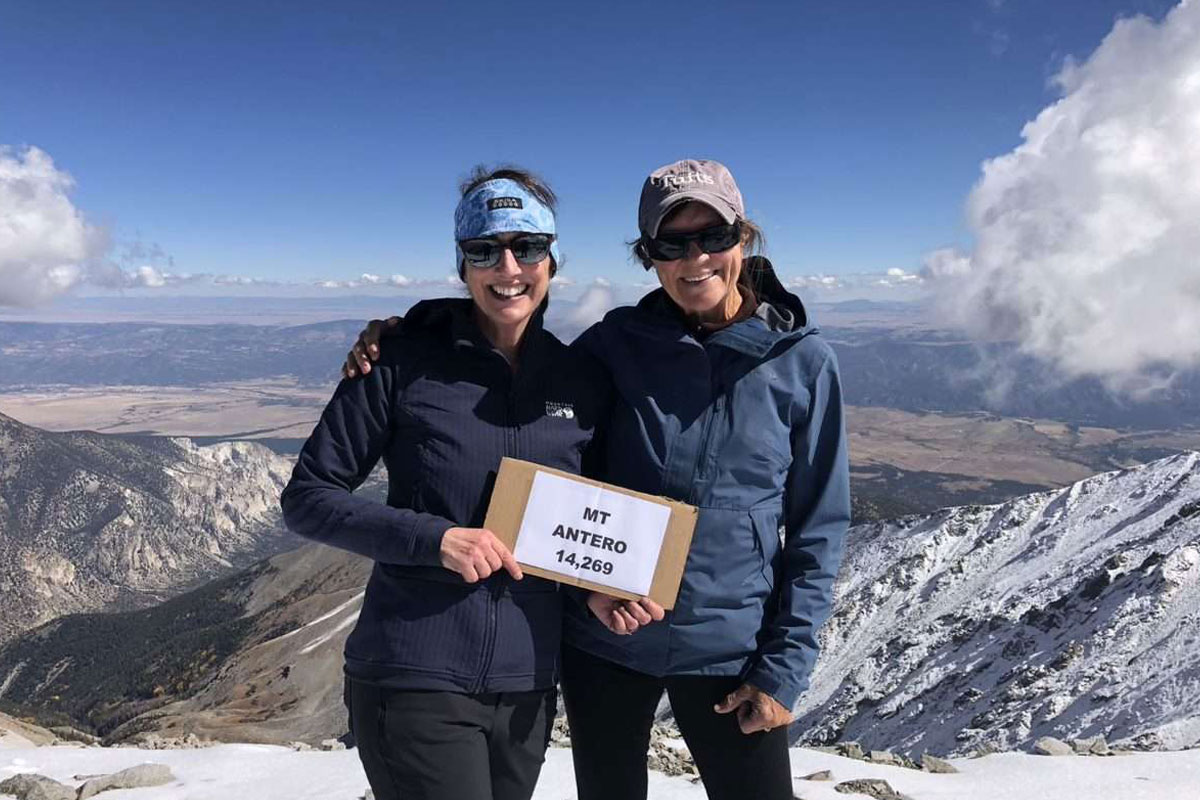19 Lessons From a New Mountaineer
By Jay Belfore
For me, hiking and climbing the summits of Colorado’s tallest peaks is a spiritual, physical & mental journey. I gain experience and learn something with each climb. Here are my first 19 lessons as a NEWBIE:
- Go with someone you like, respect and enjoy. It will most likely be a long day and it’s important there is mutual respect and understanding about the risks you will and won’t take to summit. However, you should be 100% prepared with all the tools you need to manage a successful experience on your own. Do not rely on anyone else but yourself. You need to be 100% responsible for your safety.
- Make sure you eat a complex carbohydrate meal the night before. Fueling your body is critically important. At the beginning of the hike, be sure you snack- even if you are not hungry. BelVita crackers are good sources of long-lasting energy and help me power through. Honey Stingers also work for my body. I keep both snacks within easy reach to be able to eat on the move.
- Lay out all your gear the night before. Get an early start. Earlier than you want.
- Bring more water than you think you need. 2 – 3 liters is what I bring. Running out of water is dangerous. I also pack a Katadyn filter in my backpack so if there is a river I can fill up in an emergency.
- Use COTREX, bring a battery pack for your phone and print out two copies of summit directions/instructions. Keep one set in your backpack in a ziplock bag for emergencies. Directions can easily get wet or blown away in a gust.
- Make sure all your devices are charged completely. Bring Battery packs/ portable chargers.
- Purchase a Garmin INREACH. How much is your life worth? The INREACH uses satellite GPS and messaging, and you can send a SOS. You can set up your INREACH to send tracking updates to your contacts in regular intervals so that your family/friends have peace of mind. And if there is ever the need for a rescue it will be easier to locate you. You won’t always have a cell signal with your phone. In extreme cold weather your phone will die. Get an INREACH.
- Let someone know your plans. What Trailhead will you park your car/truck, what summit you plan to hike, and what is your expected time back. Use your INREACH to waypoint your parked car.
- Wear sunblock year-round. Worst sunburn I got was a winter hike up Mount Yale. Make sure your lip balm has sunblock in it. Be sure you reapply. Pay careful attention to your ears, under your nose and lips.
- Take breaks when you need to. Listen to your body. It isn’t a race.
- Be prepared to spend the night on the mountain. If there is a problem, rescues take time. Pack a BIVY, handwarmers, windbreaker, extra clothes, extra food and medical supplies. Pack extra gloves too.
- Winter climbing -don’t take chances. Pay attention to the slope degree and CAIC- Colorado Avalanche Information Center forecasts & warnings. Buy a BCA Tracker3. Get it synched with your team members. Carry a shovel and ice ax. In a pinch you can use your snowshoe as a shovel. Be safe, and smart. The mountain will be there another day, don’t take chances.
- Summer climbing, bring bug spray and a hoodie to protect the back of your neck and keep off bugs. The pullovers that have SPF are great!
- Tell your climbing partners if you feel dizzy and/or disoriented.
- Figure out ahead of time what to pack in your backpack to help you walk out on your own in the case of a minor injury (sprain, twist, fall). Ankle brace, knee support? You need to be self-sufficient.
- Agree on a turnaround time and make sure you turn around. You don’t want to get caught above tree line in a dangerous afternoon storm or attempt to climb down in the dark.
- Check Mountain-forecast.com for weather and wind conditions. 50 MPH winds are miserable and dangerous. Why put yourself through that?
- Good gear is very important. Have the right gear for the climate. Spikes are very helpful almost all year long. I keep a pair in my pack for icy conditions. It can be icy and snow covered in July at elevation.
- Don’t take yourself too seriously. Know your limits. If the conditions are unsafe or you aren’t feeling yourself, turn around. Live to try another day.
I hope to be healthy and capable enough to summit all 58. Can’t wait to see what I learn & experience in year two!